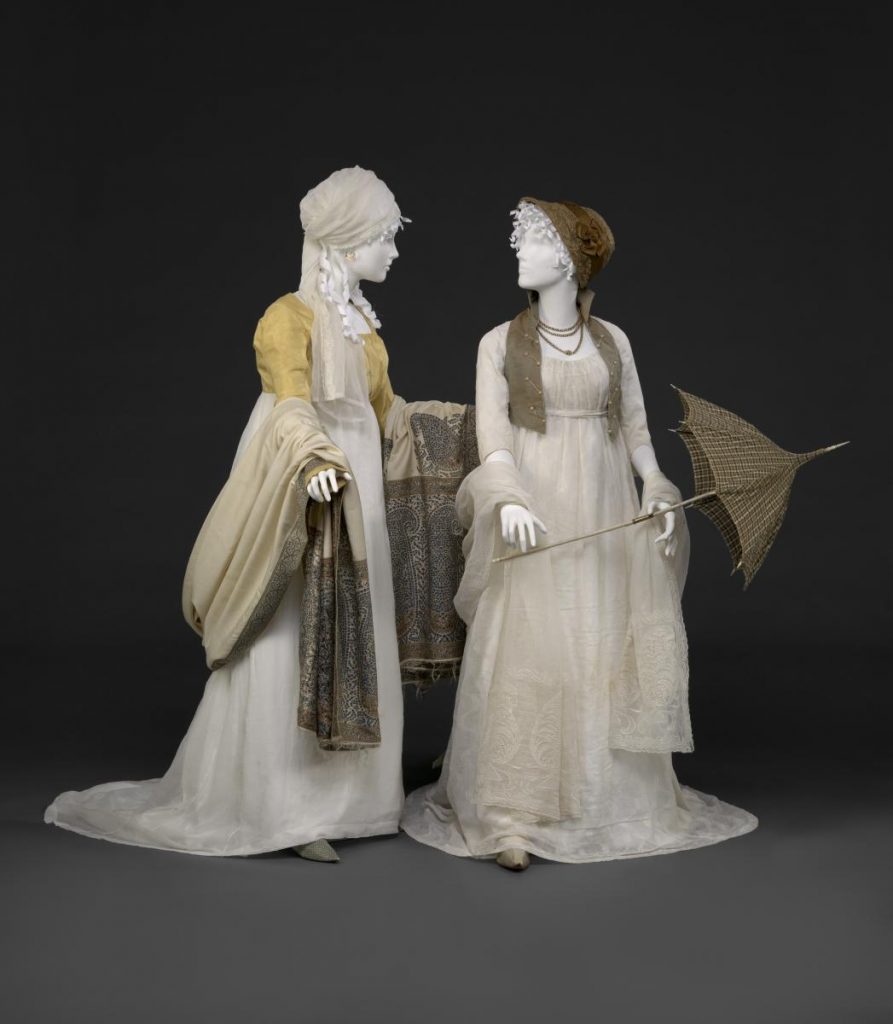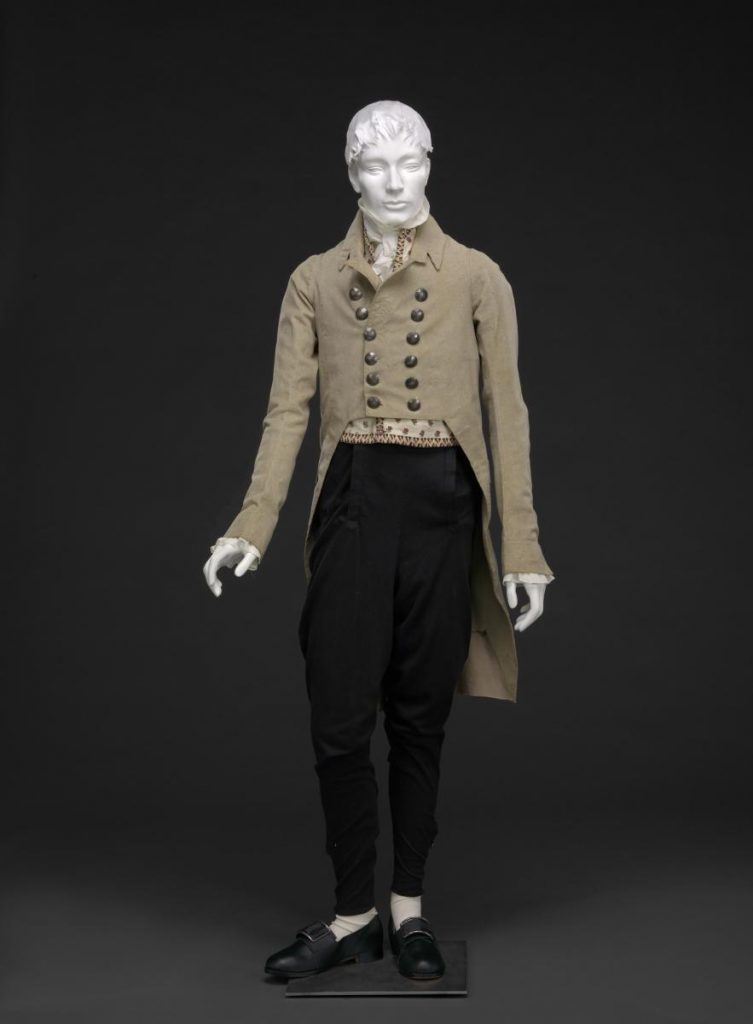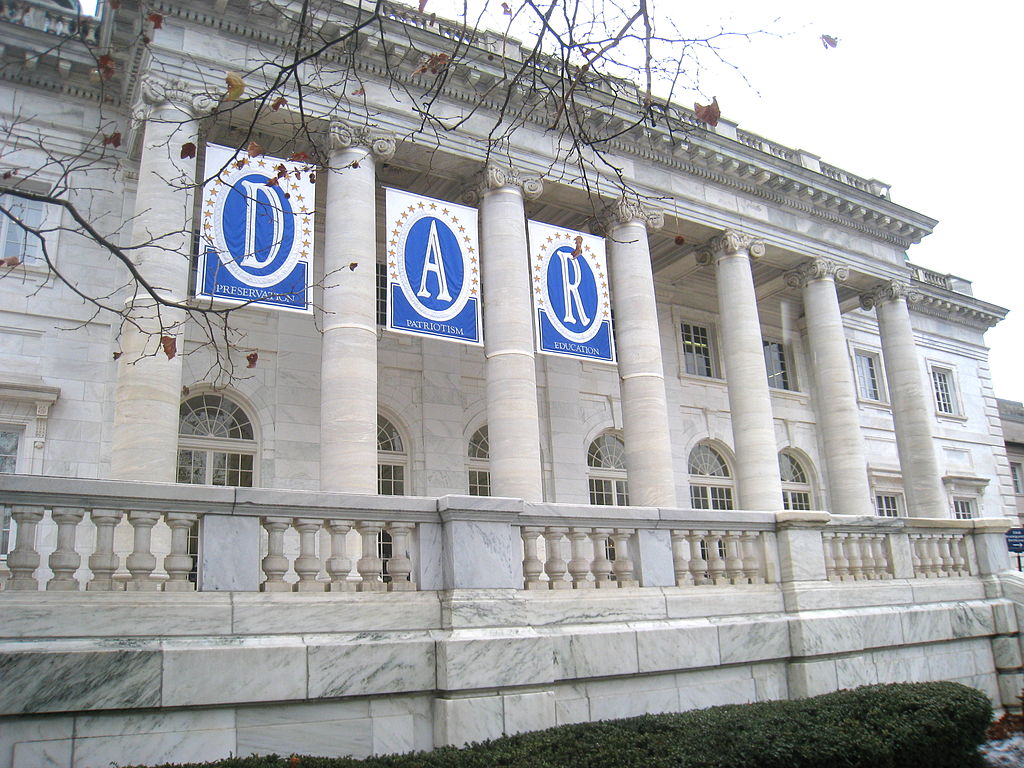Fashion has an ability to reflect shifting cultural norms and focuses. While America’s break from Great Britain in the late 18th century was a pivotal moment in world history, the cultural separation was anything but complete. America’s government may have created a new ruling body that was markedly different from the European monarchical tradition, but its culture still took many cues from European society. This is perhaps most evident in the post-Revolutionary fashion, which is the subject of a new exhibition at the Daughters of the American Revolution Museum, running from Oct. 7, 2016 to April 29, 2017. The exhibition, “An Agreeable Tyrant: Fashion After the Revolution,” is an intriguing look at post-Revolution fashion and how fashion reflected the changing social structure of the colonies.

Photo: NSDAR
The museum is organized into 31 period rooms, which are each sponsored by each state’s D.A.R. chapter. Twelve rooms have displays specific to the “Agreeable Tyrant” exhibit. The exhibit starts on the first floor with Washington, D.C.’s room, called “New Rules for a New Nation.” The map provides a sequenced layout of the exhibit that takes the visitor from the first floor to the third floor, then to the second floor, then to the lowest level to finish the exhibition in chronological order. This organization is disorienting in location and order, but does not detract much from the overall experience.
“After the War: 1781–1789” is the third exhibit, located in West Virginia’s room. The styles of the suits and dresses, which are displayed on mannequins, are evocative of a distinctly European style. The provided description corroborates this interpretation, explaining that the American people had no problem with wearing European-made fabric. Considering that the colonies went to war over prohibitive import laws and coercive trade agreements, it made sense that they would want freedom of choice when it came to their fashion. However, Britain’s powerful textile economy at the time led the United States into the same dependence on their fabrics that the rest of Europe was experiencing. It appears as if the American people were deluding themselves into believing they had a choice in their fashion, when in reality American fashion was never ever to fully establish an independent style—a theme throughout the exhibition.
Maine’s room, which contains the fourth exhibit “Fashion Becomes Democratic” is the most engaging exhibit thanks to its mix of historical anecdote and remarkable design. The frilly designs of the dresses show a sensibility derived from the European aristocracy. This reinforces the notion that although the colonies had just gained their independence from Great Britain, their culture was still inextricably linked to Europe. The exhibit description explains that George Washington wore an American-made wool suit to his inauguration as a symbolic gesture that American clothing could compete with European clothing. Judging by the style of the dress inside the room, his effort fell on deaf ears. America’s fledgling fashion industry was still heavily reliant on imports from British fabric manufacturers, and American fashion still reflected British taste as a result.
The sixth exhibit, in Kentucky’s room and titled “After the War–Again: 1815–1820,” continues the trend of reinforcing America’s dependence on Great Britain for fabric imports. However, this exhibit makes an important distinction. It notes that as America gained a national identity, it did not follow the European model of creating stringent social strata. Rather, the fashion between the social classes was extremely similar. Prices remained relatively stable and low, and the lower classes were able to afford the same outfits as the upper classes. This fact presents an excellent example of just how America was distinguishing itself from the rest of Europe: instead of relying on a society organized around strong class divisions, America was instead trying to foster equality amongst its citizens. This may not have been overly successful in practice, but in terms of the country’s fashion, it is highly evident.

Photo: NSDAR
The final noteworthy exhibit is located right after Kentucky’s room in the South Carolina room. This room contains the most scandalous exhibit: “Getting Dressed: Unmentionables.” Up until this point, the fashion displayed had been fairly similar from room to room. However, this exhibit proves to be a major departure from the norm established by the exhibition. Gone are the large dresses of European vogue. In their place are much tighter, form-fitting, revealing garments that were becoming more popular in America during the post-War of 1812 years. The most noteworthy differences in these dresses come below the waist, where legs that are similar to trousers take the place of large skirts. Although by modern day standards these outfits are still extremely modest, the explanatory sign notes that at the time, dresses fitting to women’s’ legs were considered extremely scandalous. This exhibit is easily the most entertaining of all of the exhibits presented.
For non-fashion buffs, the various dresses and suits throughout the exhibition will be difficult to critically discern from one another. However, the historical context provided will keep any visitor interested in American history entertained. American fashion goes a long way towards explaining just how connected American culture remained to European culture until after the War of 1812. Despite a confusing room order, “An Agreeable Tyrant” does an excellent job of presenting the progression of fashion throughout the early years of America’s development. With a free admission, the exhibition is worth visiting for the titillating nature of the “Unmentionables” room alone.





